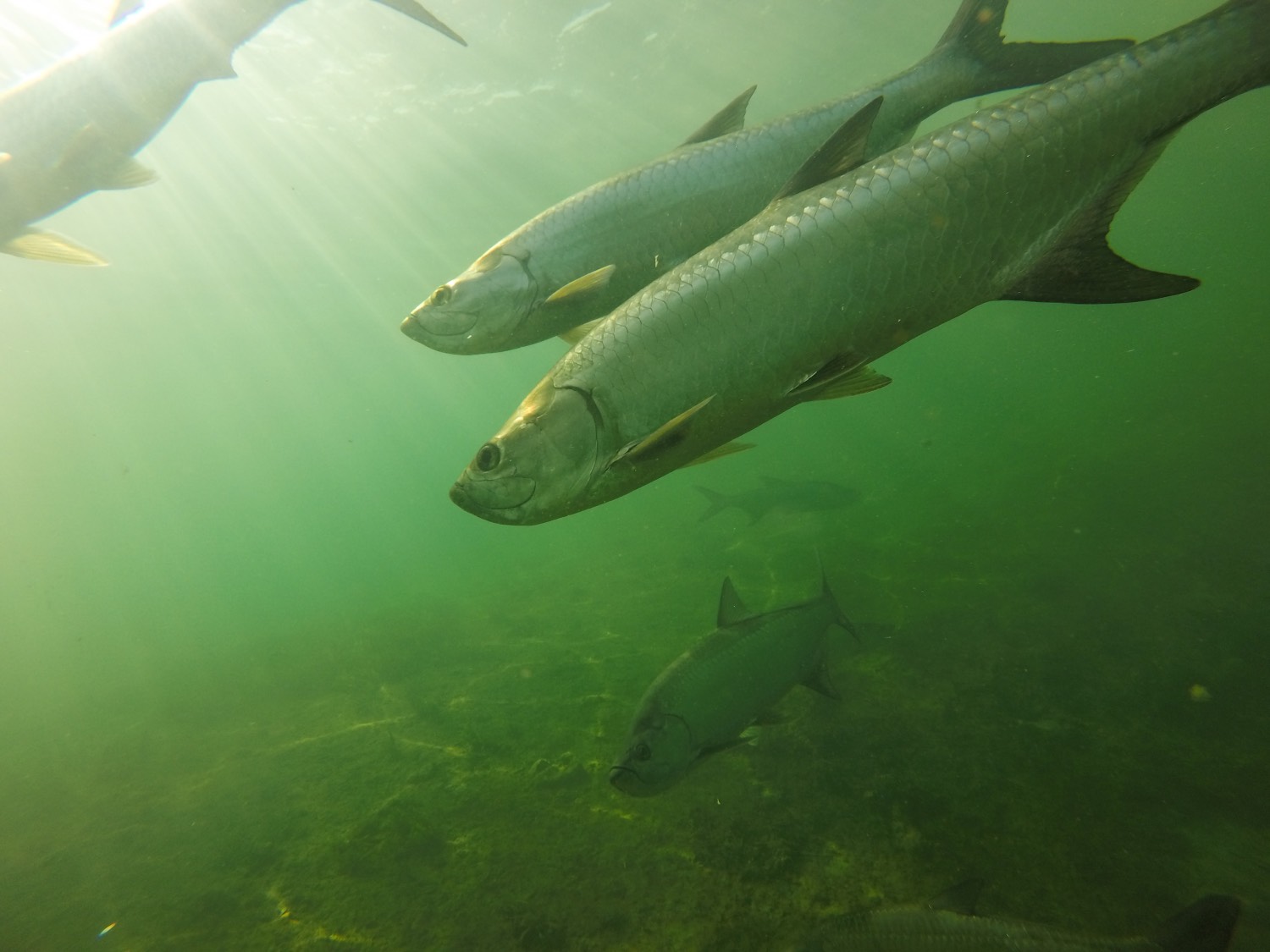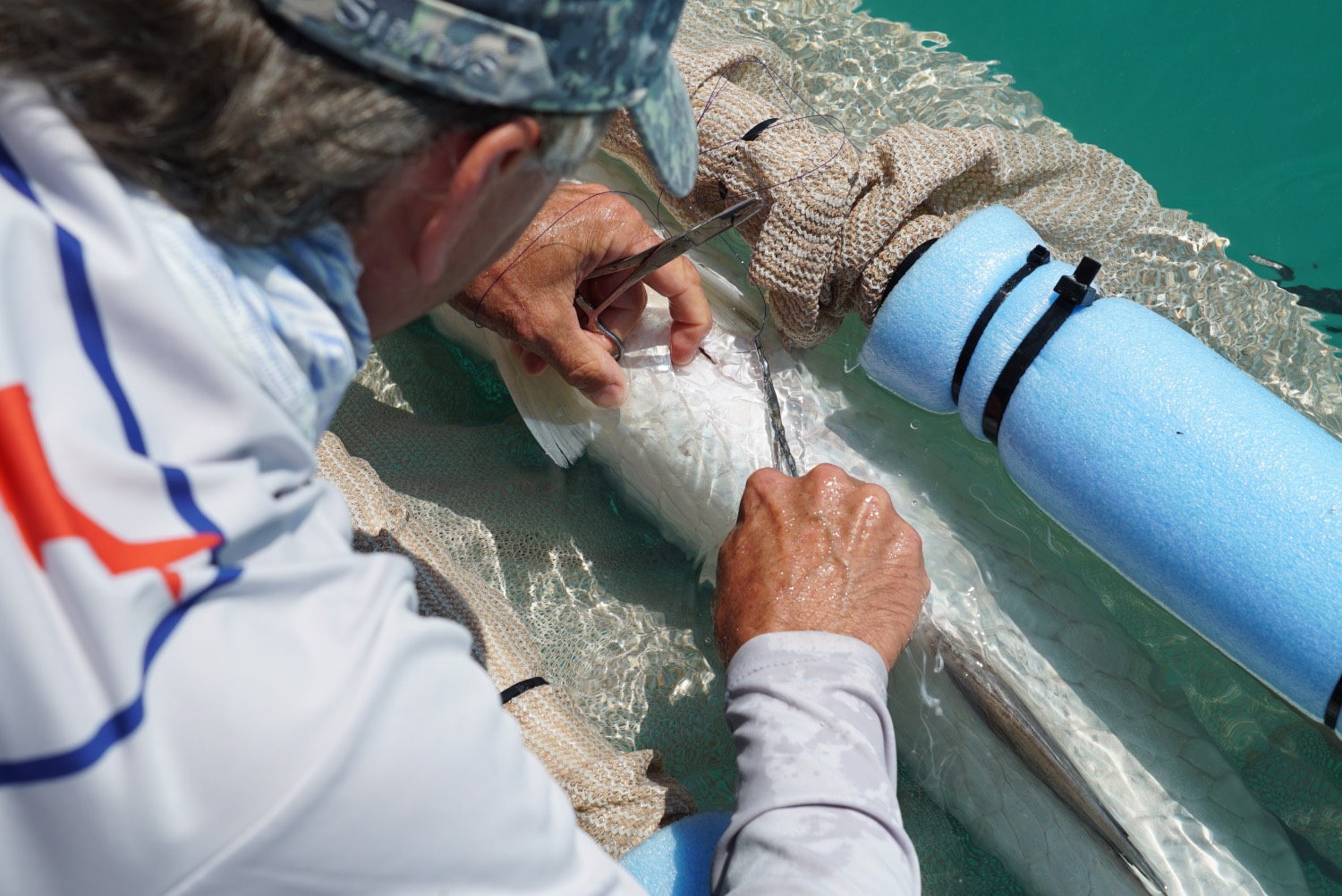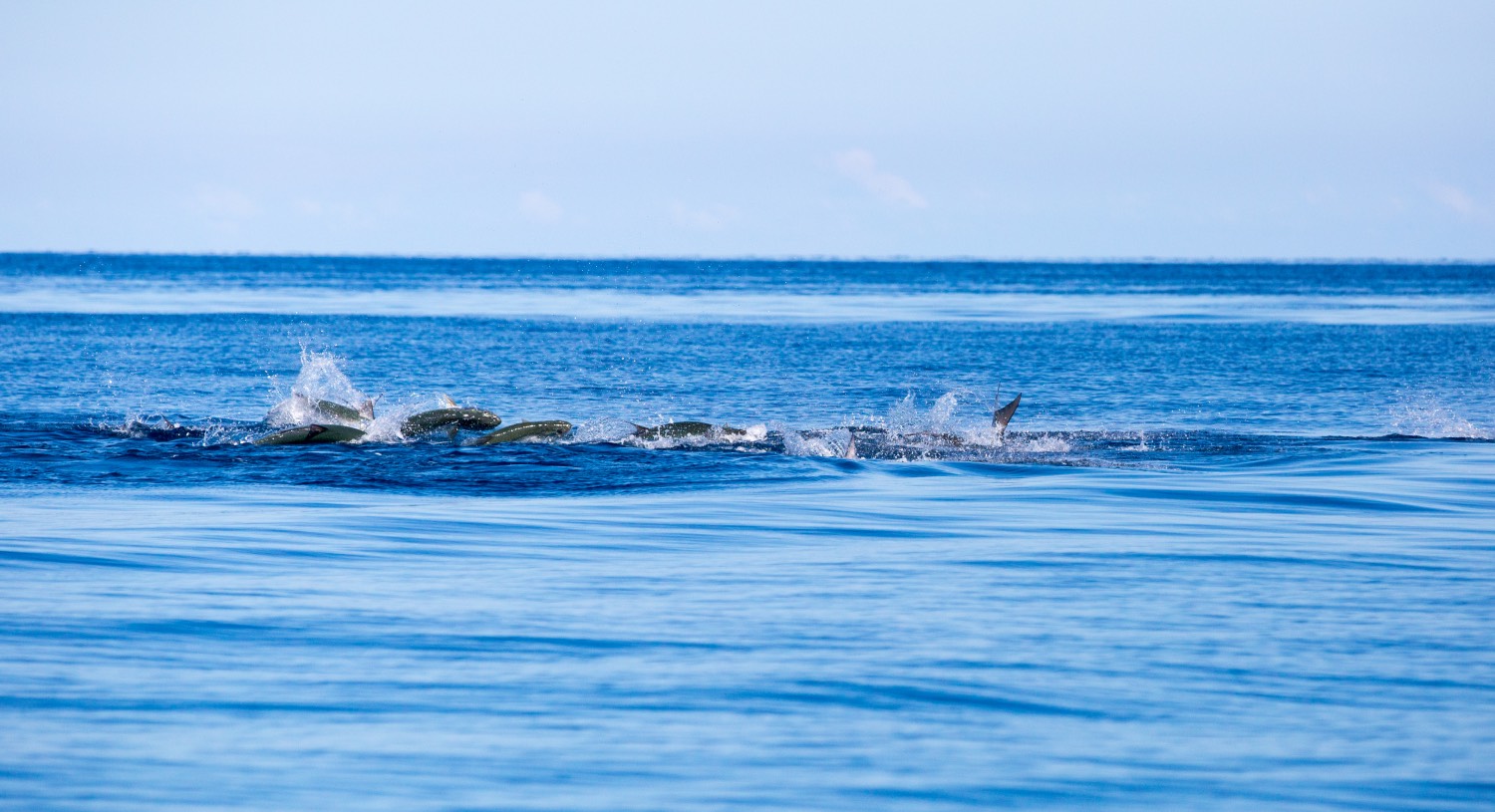
Bonefish and Tarpon Trust has established a mission to conserve and restore species like tarpon through a combined approach of research, stewardship, education and advocacy. Photography by Dr. Aaron Adams.
Written Sam White
The sun had barely cleared the horizon as two shadowy forms slowly crept along the edge of a pristine, white sand flat just a few miles from Islamorada in the Florida Keys. The shallow salt water—calm and clear as a straight-up Tito’s shot—lapped at their knees as they shuffled along. They were careful to disturb the coral marl of the flat as little as possible, wading into the rising current to keep any debris in their wake. One carried a long-tapered wand of a rod; the other, shorter, with a head full of dark curly hair barely tamed by a weathered straw fedora ringed with a dozen flies in the hatband, kept a sharp eye ahead.
“There. One o’clock moving to two—three big ones,” he whispered to the angler.
“I don’t…Wait, there they are, I see ‘em,” she replied.
Unaware of the human trespassers, the trio of bonefish continued to pick their way across the shallow flat, occasionally dipping and nosing among the small rocks and sand for shrimp and small crabs. When a tasty morsel was located, one would stand nearly on its head to root out its prey, creating puffs of sand that quickly dispersed into the current.
“Cast now, in front, and let it sit,” the guide urged. As the brown crab imitation sailed toward its quarry, he practically willed the fly to land softly a dozen feet in front of the silvery specters. One by one they continued feeding slowly toward it. “Twitch it now, slowly,” he said in a whisper.
---------------------------------------
Once a common scenario throughout the Florida Keys, bonefish unexpectedly went into decline in the early 1900s. Anglers were noticing a disturbing pattern: fewer and fewer bones were being seen, even in their usually consistent haunts. What was happening? A group of concerned fishermen and guides contacted the University of Miami to search existing research and prior studies on bonefish populations and movements, especially in the Keys, but found very little to go on. It seemed not much attention had been paid in the past. Where do they spawn? How is the heath of the overall stock? How much does water quality affect these patterns? Questions simply beget more questions, not answers.
With that, Bonefish and Tarpon Trust was founded in 1997 as Bonefish and Tarpon Unlimited. The initial group of six soon became 60 founding members, a who’s who of saltwater flats fishing including legends like Mark Sosin, Lefty Kreh, Stu Apte, Joan Wulff, and many more. This group worked to initiate research projects, built public awareness of the issues facing these gamefish, and sought to grow the membership base.
Read More: Lords of the Fly Book Review
Initial research efforts focused on tagging bonefish in order to collect much-needed data on population baseline, size, growth, and range of movement, as well as satellite tagging of tarpon to learn more about their movement patterns. Their primary species of focus were bonefish, tarpon and permit, all top-tier, premier gamefish of the flats and shallows.

Scientists from BTT tag a juvenile tarpon.
As the organization and funding grew, so did the organization’s scope of work. The first Bonefish and Tarpon Research Symposium was held in 2003, bringing together 20 participating scientists and a large public contingent. This represented significant progress from BTU’s founding six years earlier, where few in the scientific community were actively engaged in bonefish or tarpon research. The next symposium was held three years later, hosting 35 scientists. It’s now held every three years.
In 2009, BTU became Bonefish and Tarpon Trust. The following year, the first annual journal was published, which highlighted the research and conservation efforts for bonefish, tarpon and permit, and their habitats. Around 2010, BTT began to broaden its geographic scope, focusing research and conservation efforts in the Bahamas, Cuba, Belize and Mexico.
Read More: Mossy Oak x BTT
In recent years, BTT has applied its scientific credibility and research efforts to policy and regulation advocacy, both in Florida and throughout the Caribbean. This has included work with the Florida Fish and Wildlife Conservation Commission to revise and improve regulations for bonefish, tarpon, permit and barracuda, and work in the Bahamas to create national parks to protect critical bonefish spawning locations—identified by research provided by BTT—from future development.
Today, Bonefish and Tarpon Trust has established a mission to conserve and restore bonefish, tarpon and permit fisheries and habitats through research, stewardship, education and advocacy. Through science-based approaches, BTT is working to protect and enhance healthy, functioning flats fisheries and habitats in the Western Hemisphere, and restore those in decline. This work is being done in collaboration with other institutions and governments. It’s a study in conservation success that has laid a strong foundation for years of future growth.
And those Florida Keys bonefish? The stocks are rebounding nicely, offering the next generation of anglers superb angling as they go nose-to-nose with one of the world’s toughest shallow-water opponents.




























